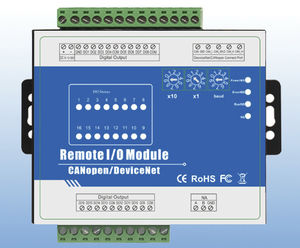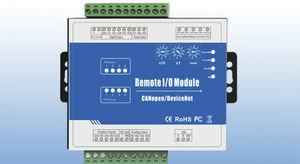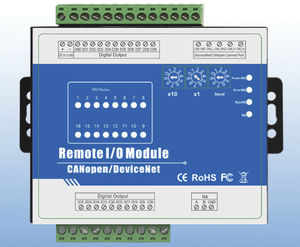
- Metrology - Laboratory
- Metrology and Test Equipment
- Frequency measuring instrument
- King Pigeon Hi-Tech Co., Ltd.
Frequency measuring module DAM400DIN railsingle-channel

Add to favorites
Compare this product
Characteristics
- Measured value
- frequency
- Other characteristics
- DIN rail, single-channel
Description
The DAM400 is for measuring a 1-channel pulse current or alternating current frequency, supports Modbus RTU protocol over RS485 serial port, powered up by 8~30VDC, measurement frequency range is 0~50, 60, 100, 200, 500, 1k, 2k, 5k, 10k, 20k, 50k, 100kHz,voltage range is 20mV, 5V, 12V, 24V, 100V, 300V, 500V. Optional analog output range is 0~20mA, 4~20mA,0~5V,0~10V.
The DAM400 is used widely in industrial automation control and measurement systems to measure frequency and transmit in ASCII data format to any RTU, SCADA, data monitoring, data loggers, PLC’s, process controllers and instrumentation that supports Modbus RTU Protocol over RS485 serial port. E.g.: Base Transceiver Station, diesel generator rooms, engine room, transformer substations, telecommunication equipment rooms, power supply systems and so on.
The DAM400 is an industrial class, isolated designed, high reliability, low-power consumption, high stability and high precision data acquisition module.
The DAM400 with fire retardant shell, standard 35mm DIN rail makes it easy to install in fields.
Mainly Features :
Ø Low measure voltage input: upto 20mV.
Ø Optional 1 AD output;
Ø Wide range power supply with reverse polarity connection protection;
Ø Modbus RTU Protocol;
Ø ESD Protection circuit for RS485 serial port;
Ø Using industrial-grade chips;
Ø Built-in watchdog ensure it reliability;
Ø Lightning protection ensure it stability;
Ø LEDs for status indication makes it easy to program in filed.
Catalogs
No catalogs are available for this product.
See all of King Pigeon Hi-Tech Co., Ltd.‘s catalogsOther King Pigeon Hi-Tech Co., Ltd. products
CANOpen DeviceNet IO Modules
*Prices are pre-tax. They exclude delivery charges and customs duties and do not include additional charges for installation or activation options. Prices are indicative only and may vary by country, with changes to the cost of raw materials and exchange rates.





